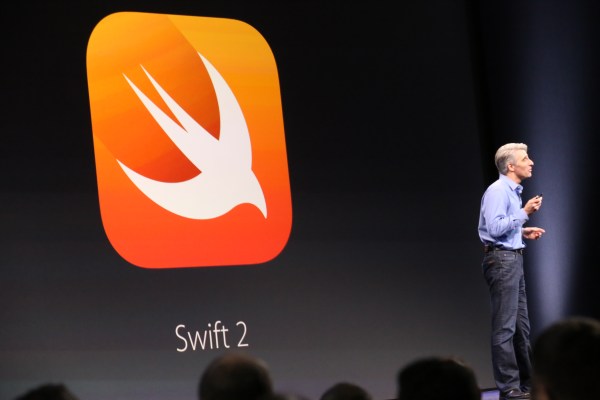This week Apple wrapped it’s keynote at WWDC, their annual developer event, and it’s clear from the numbers that the app ecosystem continues to grow at an incredible pace with 100,000,000 apps downloaded, and 850 downloads a second via the app store.
All of that is good news for developers with $30 billion paid out in the 7 years since the app store was launched.
As expected, Apple announced new versions of OSX (El Capitan), iOS (v9), WatchOS (v2), and Swift (v2). Emotional words: beautiful, stunning, and love, were peppered throughout. In short, everything you would expect from an Apple keynote.
But there was also an undertone of language and phrases that will be important to enterprise developers. Apple’s announcements point towards an increasing reliance on data and machine learning to deliver contextual apps that offer productivity gains through proactivity.
For the enterprise, context is nothing new. Terms such as 360 degree view of the customer have been a mainstay for management consulting for years. Where things get interesting for enterprises with iOS9 is in the broader availability of organic context and app intelligence. Siri now recognizes abstract phrases like “remind me about this,” or “remind me when I get home,” and nearby searches show Apple Pay supported vendors. Tim Cook repeatedly emphasized enterprise foundations: privacy, security, and trust.
Apple’s announcements point towards an increasing reliance on data and machine learning to deliver contextual apps that offer productivity gains through proactivity.
This rise of app intelligence will continue to ensure Apple invests heavily in the enterprise. iOS8 was a huge release for the enterprise that appears to have paid off. According to Apple, 98% of Fortune 500 companies have an iOS app.
At first look, iOS9 appears to be taking more of a foundational approach with a focus on better battery life, two-factor authentication for iCloud, and optimized OTA installs, Apple hopes to encourage as many iOS devices to run the latest version (83% of users are already on the latest version of iOS8, compared to only 12% for Android). App developers benefit from a less fragmented environment to allow them to create more contextual apps that deliver on Apple’s vision. Enterprise IT departments benefit through streamlined device management and BYOD strategies.
So where does all of this leave enterprise app developers? The answer came with a statement from Tim Cook when he referred to Swift as the “the next big programming language,” developers will be building apps in “the next 20 years.” That’s a big statement. It sounds a lot like Sun’s battle cry for Java. Unlike Java, however, Tim Cook followed that statement up with two of the most important words any developer can ever hear: “open source.”
Thanks in large part to the ease of learning Swift – as compared to Objective-C -, the open sourcing of core libraries, and the ability for developers to create contextual apps on the latest versions of iOS, the opportunity to create apps, which can utilize the proactive features presented during the keynote, to drive employee productivity increases enterprises will likely accelerate, and expand, their native iOS development plans in the year to come.![]()
